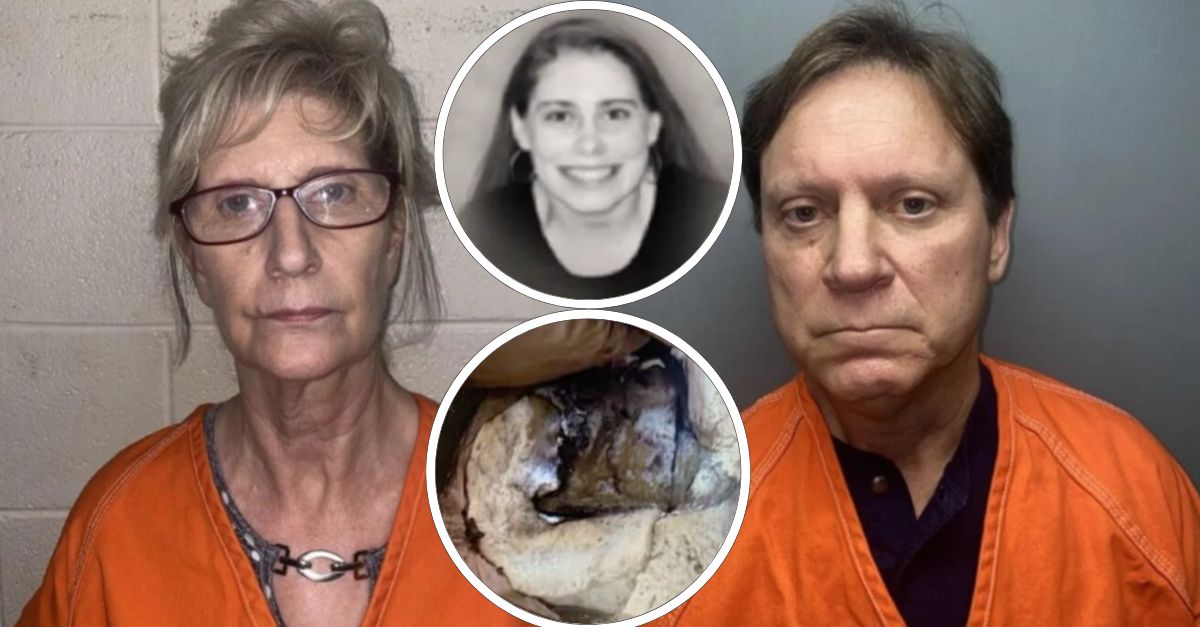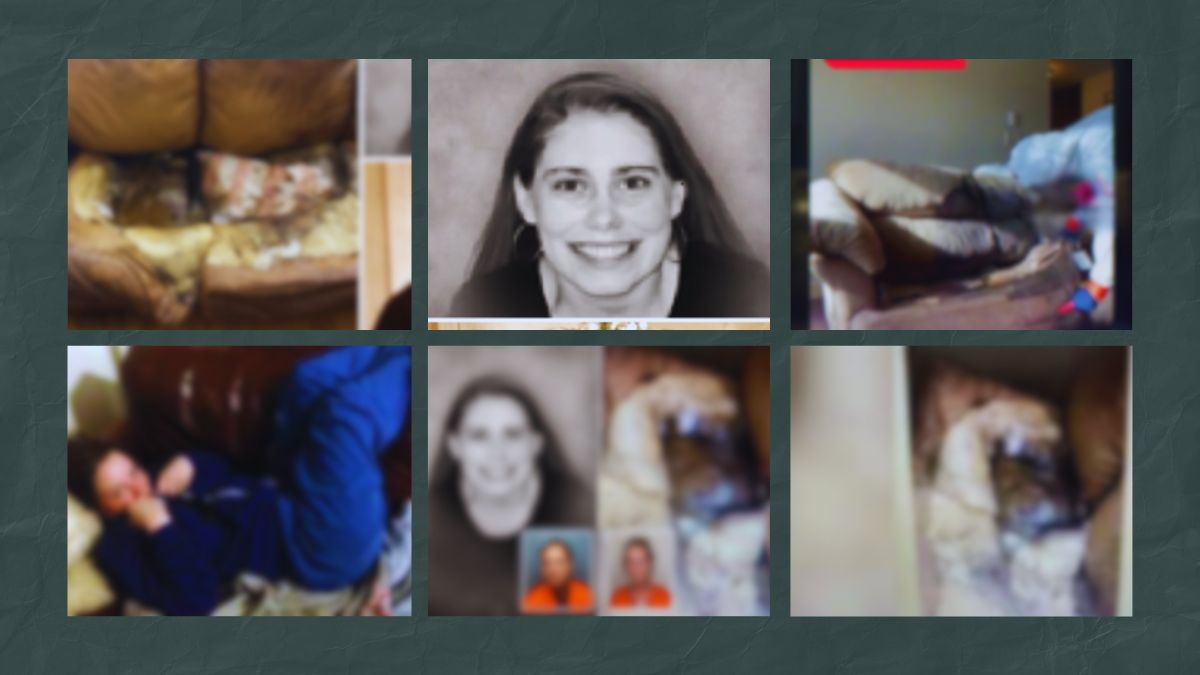When it comes to understanding the Lacey Fletcher autopsy photo context and ethical implications, we’re diving into a topic that’s heavy, raw, and packed with layers of complexity. This isn’t just about an image—it’s about the ethics, the humanity, and the broader implications of how we handle sensitive information in today’s digital world. In a time where information spreads faster than wildfire, it’s crucial to dissect the story behind the photo, the legal considerations, and the moral dilemmas it brings to the forefront.
Let’s face it, folks. Autopsy photos are not something we casually stumble upon in our daily lives. But when they do surface, they spark conversations that go beyond mere curiosity. The case of Lacey Fletcher is no exception. Her story has captured public attention, not just because of the circumstances surrounding her death, but because of the way her autopsy photo has been handled and interpreted in the media.
As we explore this topic, we’re going to break it down into bite-sized chunks. From the context of her case to the ethical questions that arise, we’ll leave no stone unturned. So, buckle up and let’s dive into the nitty-gritty of this complex issue, one that challenges us to think critically about the balance between public interest and personal dignity.
Read also:Harry And Meghan Frozen Out The Untold Story Behind The Royal Chill
Table of Contents
- The Context Behind Lacey Fletcher’s Case
- Understanding Autopsy Photos and Their Purpose
- Ethical Implications of Sharing Autopsy Photos
- Legal Considerations Surrounding Autopsy Photos
- The Impact on Families and Society
- Role of Media in Handling Sensitive Content
- Balancing Privacy and Public Interest
- Psychological Effects on Viewers
- Alternatives to Autopsy Photos in Journalism
- Conclusion: Moving Forward Ethically
The Context Behind Lacey Fletcher’s Case
Alright, let’s start with the basics. Lacey Fletcher’s case gained national attention not just because of the tragic nature of her death, but because of the way her story unfolded in the public eye. Born on June 15, 1987, in a small town in Texas, Lacey was known for her vibrant personality and love for adventure. But life took a dark turn when she was found deceased under mysterious circumstances. The investigation that followed led to the release of her autopsy photos, sparking a heated debate about their use and dissemination.
Now, here’s the thing: the context matters. Autopsy photos aren’t just random images. They are part of a larger investigative process that aims to uncover the truth behind someone’s death. In Lacey’s case, the photos were used as evidence to piece together what happened. But the question remains—was their release justified? That’s where the conversation gets interesting.
Understanding the Timeline of Events
Let’s break it down step by step. Lacey was last seen alive on a Friday night. Her body was discovered two days later, and the autopsy was conducted shortly after. The photos, which were initially part of the official investigation, somehow made their way into the hands of the media. This is where the line between public interest and exploitation gets blurred.
Think about it. In a world where clicks and views drive content, it’s easy to see why these photos became sensationalized. But at what cost? The ripple effect of such actions extends far beyond the headlines.
Understanding Autopsy Photos and Their Purpose
Before we dive deeper into the ethical implications, let’s talk about what autopsy photos actually are. Simply put, they are images taken during the autopsy process to document the condition of the body and any evidence of trauma or disease. These photos play a crucial role in forensic investigations, helping pathologists determine the cause and manner of death.
But here’s the catch: these photos are meant for a specific audience—law enforcement, medical professionals, and legal teams. They are not designed for public consumption. The release of such images without proper context can lead to misinformation and unnecessary distress.
Read also:Caretaker Jailed For Assaulting Disabled Woman A Deep Dive Into The Shocking Reality
What Do Experts Say?
Dr. Emily Carter, a forensic pathologist with over 20 years of experience, explains it this way: “Autopsy photos are tools, not trophies. They serve a purpose in the justice system, but their misuse can have devastating consequences.” Her words highlight the importance of handling these images with care and respect.
Ethical Implications of Sharing Autopsy Photos
Now, let’s get to the heart of the matter. The ethical implications of sharing autopsy photos are vast and complex. On one hand, the public has a right to know the truth about high-profile cases. On the other hand, there’s a responsibility to protect the dignity of the deceased and their loved ones.
Imagine being a family member who wakes up to see intimate details of your loved one’s death splashed across the internet. It’s a violation of privacy that no one should have to endure. This is why ethics play such a crucial role in how we handle sensitive content.
Key Ethical Concerns
- Violation of privacy rights
- Impact on mental health of family members
- Potential for exploitation by media outlets
- Long-term effects on societal norms
These concerns are not theoretical—they are real and pressing. As a society, we need to have an open dialogue about where to draw the line.
Legal Considerations Surrounding Autopsy Photos
Legal frameworks exist to govern the use and distribution of autopsy photos, but they vary from country to country. In the United States, for example, the release of such images is often restricted to authorized personnel. However, loopholes and misinterpretations of the law can lead to unauthorized sharing.
It’s worth noting that the unauthorized release of autopsy photos can result in legal consequences, including fines and criminal charges. But enforcement is often inconsistent, which raises questions about the effectiveness of current laws.
Case Studies and Precedents
Looking at past cases can provide insight into how the legal system handles these situations. For instance, the O.J. Simpson trial brought the issue of autopsy photos into the spotlight. The way those images were handled set a precedent for future cases, emphasizing the need for stricter regulations.
The Impact on Families and Society
The impact of sharing autopsy photos extends beyond the immediate family. It affects society as a whole, shaping how we view death and grief. When sensitive content is mishandled, it can perpetuate a culture of desensitization and exploitation.
Take, for example, the rise of true crime documentaries and podcasts. While these formats can be educational, they also run the risk of glorifying violence and tragedy. The Lacey Fletcher case is a prime example of how the line between education and exploitation can become blurred.
How Can We Do Better?
Education and awareness are key. By fostering a culture of empathy and respect, we can ensure that sensitive content is handled responsibly. This involves not just media outlets, but also individuals who consume and share such content.
Role of Media in Handling Sensitive Content
The media plays a pivotal role in shaping public perception. When it comes to sensitive content like autopsy photos, the responsibility is even greater. Journalists and content creators must weigh the value of the information against the potential harm it may cause.
Guidelines and codes of ethics exist to help navigate these waters, but adherence is not always consistent. This is where accountability comes into play. Media outlets need to be transparent about their decision-making processes and willing to accept feedback from their audience.
Best Practices for Responsible Reporting
- Obtain consent from family members before publishing
- Provide context and avoid sensationalism
- Focus on the story, not the graphic details
- Offer resources for those affected by the content
These practices may seem obvious, but they are often overlooked in the pursuit of clicks and shares.
Balancing Privacy and Public Interest
Striking a balance between privacy and public interest is one of the biggest challenges in this debate. While the public has a right to know certain details about high-profile cases, that right should not come at the expense of someone’s dignity.
Legal experts and ethicists agree that there needs to be a clear framework for determining what information is essential to the public interest. This framework should prioritize transparency while respecting the rights of those involved.
What Does the Law Say?
According to the Freedom of Information Act (FOIA), certain records, including autopsy photos, may be exempt from public disclosure if they invade personal privacy. However, the interpretation of this law can vary, leading to inconsistencies in how cases are handled.
Psychological Effects on Viewers
Let’s not forget the psychological impact of viewing autopsy photos. Studies have shown that exposure to graphic content can lead to increased anxiety, depression, and desensitization. This is particularly true for vulnerable populations, such as children and individuals with pre-existing mental health conditions.
As responsible citizens, we need to be mindful of the content we consume and share. Just because something is available doesn’t mean it’s appropriate or beneficial.
How to Protect Yourself and Others
- Be selective about the content you engage with
- Set boundaries for your media consumption
- Offer support to those who may be affected
- Advocate for responsible content creation
These small steps can make a big difference in creating a more compassionate and informed society.
Alternatives to Autopsy Photos in Journalism
So, what are the alternatives? In an age where visual content dominates, it’s understandable why autopsy photos might be seen as valuable. But there are other ways to convey the same information without compromising dignity.
For instance, journalists can use descriptive language, expert interviews, and reconstructed visuals to tell the story. These methods can be just as effective, if not more so, in engaging audiences while maintaining ethical standards.
Examples of Successful Alternatives
Take the case of the Netflix documentary “The Innocence Files.” Instead of relying on graphic images, the creators used interviews, animations, and reenactments to bring the story to life. The result was a powerful and respectful portrayal of a complex issue.
Conclusion: Moving Forward Ethically
As we wrap up this discussion, it’s clear that understanding the Lacey Fletcher autopsy photo context and ethical implications requires a multifaceted approach. From legal considerations to psychological effects, every aspect plays a role in shaping how we handle sensitive content.
So, what can you do? Start by being mindful of the content you consume and share. Advocate for stricter regulations and hold media outlets accountable. Most importantly, remember that behind every story is a person—a person who deserves respect and dignity, even in death.
Let’s work together to create a world where the pursuit of truth doesn’t come at the expense of humanity. Share your thoughts in the comments below, and don’t forget to check out our other articles for more insights on important topics. Thanks for reading, folks!


